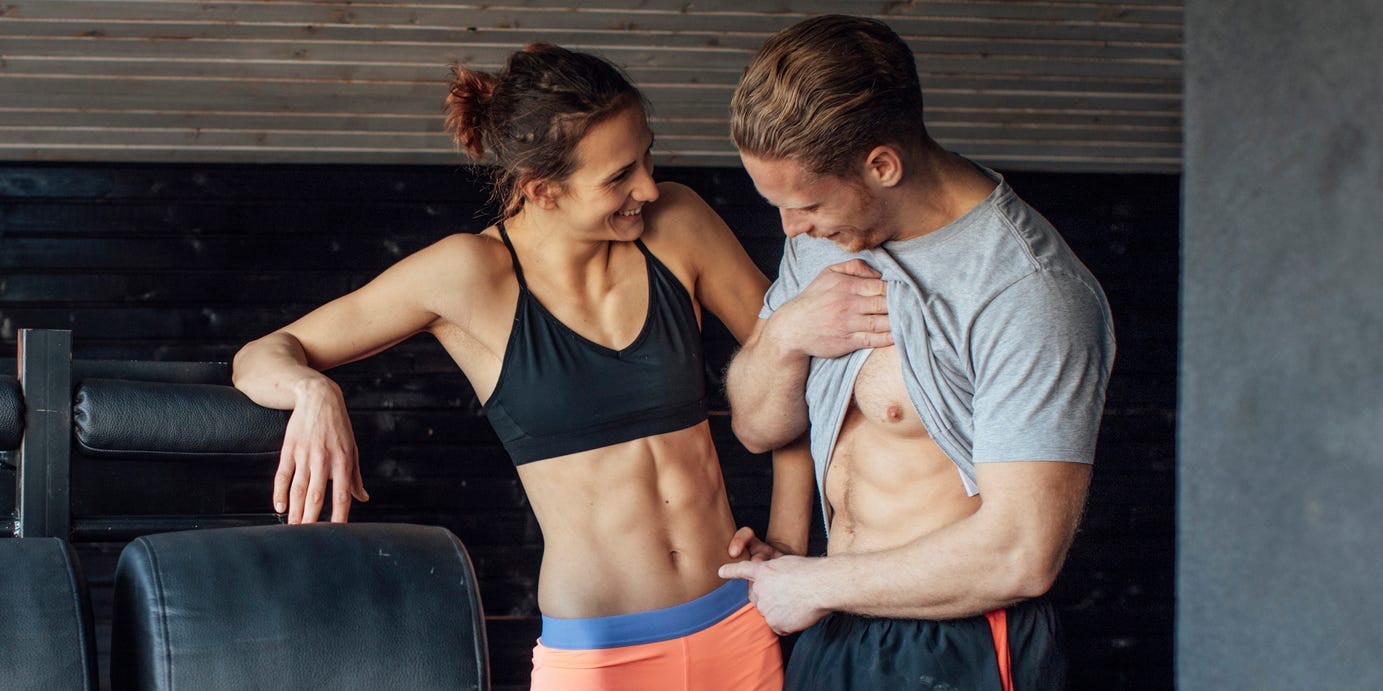
FreshSplash/Getty Images
- To get abs, you need to lower your body fat percentage by eating healthy and doing cardio.
- To get a six-pack, you'll need to build your abs with exercises like Russian twists and leg lowers.
- Benefits of a strong core include improved posture, fewer injuries, and decreased back pain.
- Visit Insider's Health Reference library for more advice.
A six-pack takes work, but strong abdominal muscles will pay off beyond looks: They help you maintain good posture, prevent injuries, alleviate lower back pain, and improve athletic performance.
How easily you can get a six-pack depends on your current fitness level and body fat percentage. It's also important to remember that genetics, which control how fat is distributed, plays a factor in how easy or difficult it is for one to get abs.
1. Check your diet
Getting a six-pack requires lowering your body fat percentage.
To burn fat, you need to be in a caloric deficit, which means consuming fewer calories than burned. "The saying 'abs are made in the kitchen is pretty accurate for most people," says Juliet Root, a personal trainer and Onyx instructor.
Although you need a caloric deficit, it's important to maintain a healthy diet. According to Yasi Ansari, RDN, a certified specialist in sports dietetics and national media spokesperson for the Academy of Nutrition and Dietetics, here are some tips for eating a healthy diet while you work toward a six-pack:
- Focus on lean protein, such as pork, lamb, chicken, fish, dairy, nuts, seeds, and legumes. "This will promote satiety and help your body repair and rebuild muscle tissue after your workout," says Angel Planells, RDN, a national media spokesperson for the Academy of Nutrition and Dietetics.
- Choose whole grains over refined carbs, which contain less fiber, vitamins, and minerals.
- Load up on fruits and veggies, which are rich in fiber and nutrients.
- Carry healthy snacks with you to avoid the temptation of easily accessible junk food.
- Eat snacks that combine multiple food groups. For example, instead of just eating an apple, pair it with peanut butter for increased satiety, Planells says.
- Watch portion sizes, to avoid overeating.
- Stay hydrated. Drink about three to four liters per day, Ansari says.
Timing is also helpful. Ansari recommends:
- Eating meals high in carbs, moderate in protein, and low-fat three to four hours before a workout.
- Snacking on something high in simple carbohydrates, like applesauce one to two hours before training.
- Eating protein and carbohydrates after training: snacks within one hour and a meal within two hours.
2. Do cardio
Cardio can help you achieve a low body fat percentage, which is key for having a visible six-pack Root says.
In fact, a small 2013 study of healthy, sedentary adults in Nigeria found that a 12-week aerobic and abdominal strengthening exercise program reduced abdominal fat.
Some types of cardio are better than others for building abs. High-intensity interval training (HIIT), which incorporates short bursts of intense activity, is better than going for a long run at a steady pace.
That's because HIIT keeps your heart rate up, promotes fat burning, and boosts your metabolism. A large 2019 review found people who did HIIT workouts lost 28.5% more fat than people who did moderate-intensity exercise.
3. Build your core
Core exercises strengthen and tone the underlying abdominal muscles. Also, core and other strength exercises boost your metabolism, so you burn more calories even while at rest. This can help you achieve a lower body fat percentage.
Plus, building a strong core - which includes your obliques and back muscles - helps you maintain balance and stability, which is necessary for daily activities, says Root.
Root suggests doing specific abdominal training exercises no more than twice a week and using a combination of body weight and weighted movements.
Here are some example ab exercises to incorporate into your routine:
Insider's takeaway
To build six-pack abs, you need an exercise routine that includes both strength exercises and cardio. Plus, following a healthy diet, like eating more lean protein, whole grains, and vegetables can help you reach your six-pack goals.
However, "focusing only on your appearance can lead to unhealthy behaviors," Ansari says. "Rather than focusing on appearance, focus on health and how training helps you feel your best on a daily basis."